Brewing Beer with Wheat Malt
Published: July 23, 2025 at 6:29:15 AM UTC
Last updated: December 12, 2025 at 3:30:51 PM UTC
The history of brewing beer with wheat malt stretches back centuries, possibly even millennia. In Germany, wheat was a staple in beer production, leading to the Reinheitsgebot. This regulation aimed to ensure wheat was reserved for bread, limiting its use in brewing. Wheat malt is not just for wheat beers; it's a versatile base malt for many styles. Its distinct qualities enhance the beer's flavor and texture.
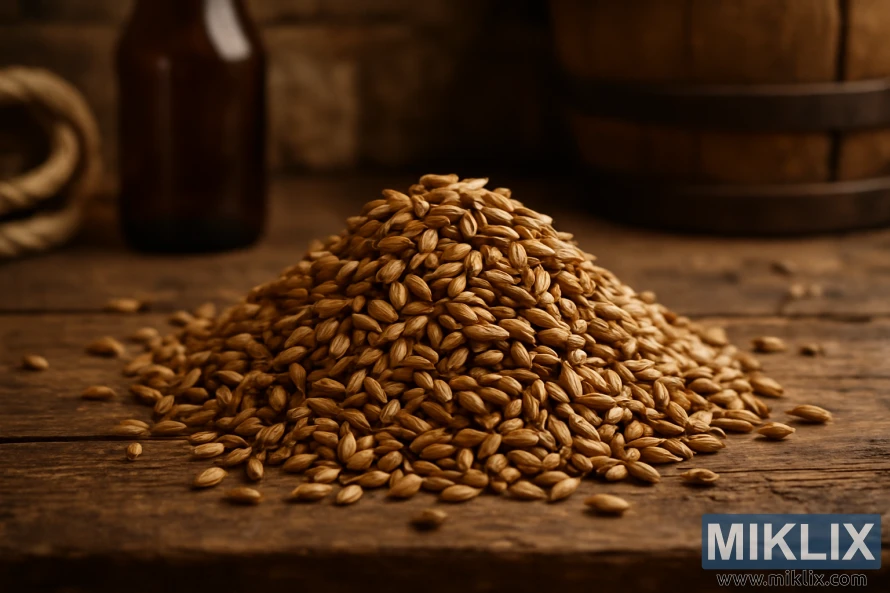
Key Takeaways
- Wheat malt has been used in brewing for centuries.
- It is a versatile ingredient that can be used as a base malt.
- Wheat malt contributes to the flavor and texture of beer.
- Brewing with wheat malt is not limited to traditional wheat beers.
- Regulations like Reinheitsgebot have historically impacted wheat malt usage.
What is Wheat Malt: Understanding the Fundamentals
Brewers often choose wheat malt for its unique flavor and characteristics. Derived from wheat grains, it stands out from barley malt. This ingredient is key in brewing, adding a distinct taste to beers.
The malting process for wheat involves soaking the grain in water. This activates enzymes, then drying stops germination. This step develops enzymes that break down starches into fermentable sugars during brewing.
The taste of wheat malt is often described as wheaty or bread-like. This is different from barley malt's richer, maltier flavor. This unique taste makes wheat malt popular for wheat beers and some Belgian ales.
Wheat malt can be used in various brewing ways. It can be the main malt, providing most fermentable sugars, or a secondary malt. This adds flavor and character to the beer.
- Wheat malt adds complexity to beer flavors.
- It is used in traditional wheat beers and some specialty beers.
- The brewing process with wheat malt requires some adjustments compared to using barley malt.
Understanding wheat malt is vital for brewers exploring its use. Knowing its definition, characteristics, and uses helps brewers appreciate its role. It allows them to create diverse and flavorful beers.
The Historical Significance of Wheat Malt in Brewing
The history of wheat malt in brewing is rich and complex, deeply connected to the evolution of beer styles. For centuries, wheat has played a significant role in brewing, being a staple in Germany's brewing traditions.
Wheat malt's historical importance stems from its unique characteristics and the traditional brewing methods of specific regions. In Germany, for instance, wheat beers have been a staple for centuries. Records of wheat beer production date back to the Middle Ages.
The Reinheitsgebot, a purity law from 1589 in Bavaria, significantly impacted wheat malt's use in brewing. This law restricted ingredients to barley, hops, and water. Yet, it allowed wheat in specific beer styles, preserving the tradition of wheat beer brewing.
Some key historical points about wheat malt in brewing include:
- Wheat was a common ingredient in medieval brewing.
- The Reinheitsgebot influenced the development of wheat beer styles in Germany.
- Wheat malt was used in various traditional beer styles, contributing to their unique flavor profiles.
The historical significance of wheat malt extends beyond its past use. It continues to shape modern brewing practices. Many contemporary brewers use historical techniques and ingredients to craft innovative beers. These beers honor traditional brewing methods.
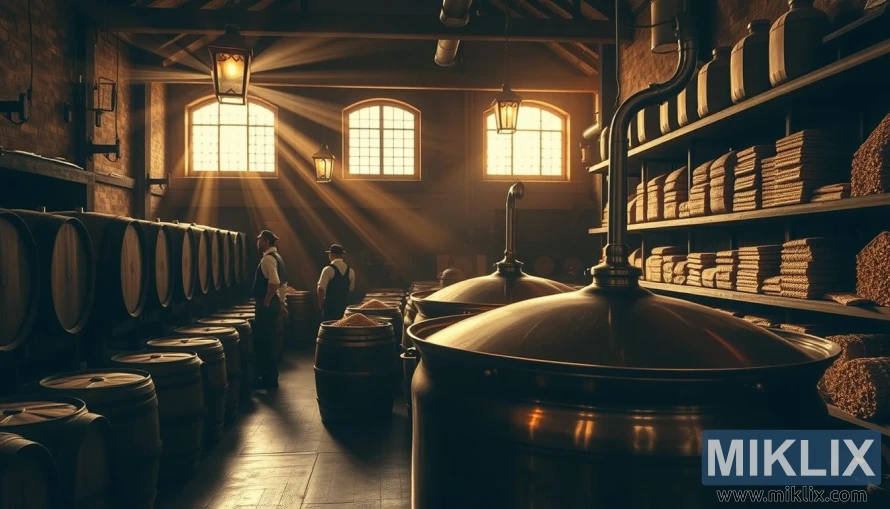
Key Characteristics of Wheat Malt
Wheat malt is a versatile ingredient in brewing, known for its distinct flavor. It offers a unique taste that can greatly enhance beer quality. Unlike barley malt, wheat malt has a more wheaty or bread-like flavor. This is a desirable trait in many beer styles.
Using wheat malt in brewing brings several key characteristics. It contributes to a smoother flavor and mouthfeel in beers. This makes it perfect for brewers aiming to create beers with a refined texture.
The benefits of using wheat malt include its ability to add complexity to beers. It also improves their overall drinkability. Some of the key uses of wheat malt in brewing include:
- Enhancing the flavor profile of beers
- Improving the mouthfeel of beers
- Creating beers with a more refreshing character
In terms of its flavor profile, wheat malt is known for its lighter, more delicate taste. This makes it a favorite among brewers aiming for a more subtle flavor in their beers.
Overall, wheat malt is a valuable ingredient in brewing. It offers a range of benefits and uses that can enhance beer quality. Its unique flavor profile and ability to improve mouthfeel make it a popular choice among brewers.
Preparing Your Brewery for Wheat Malt Usage
Before you start brewing with wheat malt, make sure your brewery is ready. Wheat malt is great for many beer styles, like American wheat beers and weizens. Each style needs a unique brewing approach.
First, check your equipment. Wheat malt processing differs from barley malt. You'll need to adjust your milling to get a finer grist. This helps with lautering and extracting more from the malt.
Adjusting your lautering techniques is also important. Wheat malt can make the mash thicker, causing lautering problems. Using step-mashing or decoction mashing can help manage these issues. It improves the wort quality.
Controlling lautering temperature and pH is key. The right conditions are essential for the flavor and quality of your beers. Your equipment must be able to control temperature and pH precisely.
- Inspect and adjust your milling equipment for finer grist.
- Implement appropriate lautering techniques, such as step-mashing or decoction.
- Ensure precise control over lautering temperature and pH.
By focusing on these areas, you can prepare your brewery for wheat malt. This will let you make a variety of high-quality beers. These beers will highlight the unique flavors of wheat malt.
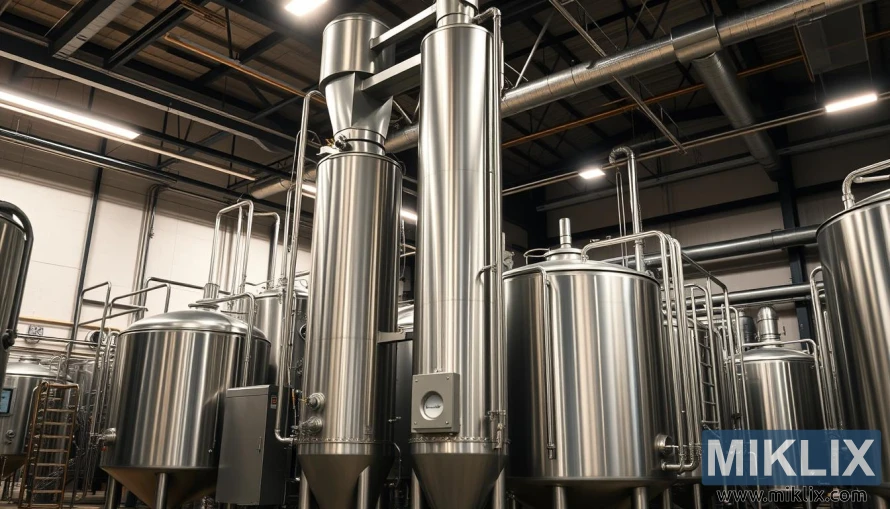
The Mashing Process with Wheat Malt
Wheat malt mashing is a precise art that requires careful techniques. To brew with wheat malt successfully, one must grasp the mashing process fully.
Mashing involves mixing wheat malt with hot water to extract sugars. This step is vital as it influences the beer's quality and flavor. Adding rice hulls is common to enhance filterability, a key when using wheat malt.
- Temperature control: Maintaining the optimal temperature is critical for enzymatic activity.
- Water ratio: The ratio of water to wheat malt affects the extraction efficiency.
- Mashing time: The duration of the mashing process can impact the fermentability of the wort.
By mastering these aspects of the mashing process, brewers can optimize their use of wheat malt. This leads to the production of high-quality beers. Whether brewing a traditional wheat beer or experimenting with wheat malt in other styles, understanding the mashing process is essential. It's the key to achieving your desired outcomes.
Using Wheat Malt as a Base Malt
Integrating wheat malt into your brewing process can elevate your beer's quality and character. It significantly improves head stability and retention. This is a key feature in beers where a lasting head is essential.
The flavor profile of beers made with wheat malt as a base is often refreshing and slightly tart. This adds a layer of complexity to the brew. Wheat malt also enhances the mouthfeel, making the beer more enjoyable to drink.
When using wheat malt as a base, it's important to consider the type of wheat malt. Different types can impart various flavors and characteristics. The advantages of using wheat malt include better beer quality, enhanced flavor profiles, and improved head retention.
- Enhanced head stability and retention
- Complex and refreshing flavor profiles
- Improved overall beer quality
Understanding the benefits and applications of wheat malt as a base malt allows brewers to craft a wide range of high-quality beers. These beers can stand out in the market.
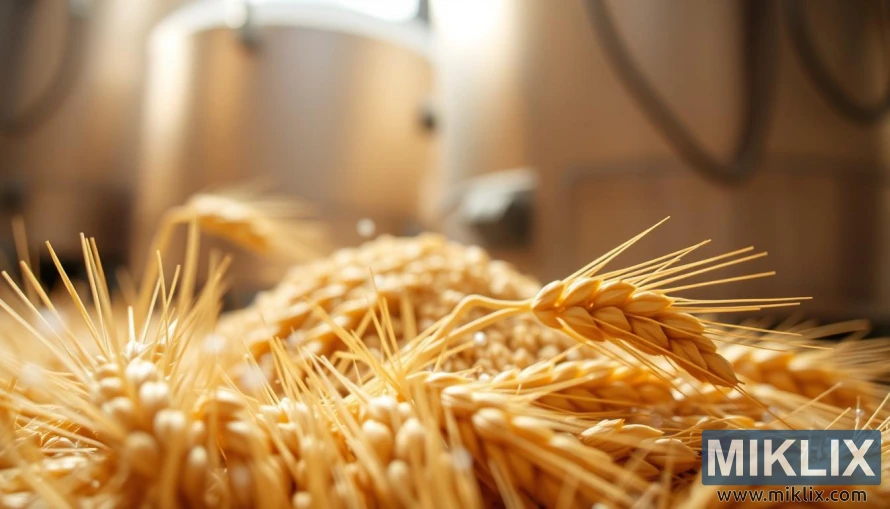
Traditional Beer Styles Using Wheat Malt
Many traditional beer styles owe their distinct flavor profiles to wheat malt. This ingredient has been a staple in brewing for centuries. It adds a unique twist to various beer styles.
Wheat malt is key in several traditional beer styles. These include American wheat beers, German weizens, Belgian witbiers, and Bavarian weissbiers. Each style highlights the unique characteristics wheat malt brings to brewing.
American wheat beers are known for their refreshing, fruity flavors. This is thanks to wheat malt and specific yeast strains. German weizens, with their cloudy appearance and clove-like flavors, also rely on wheat malt and yeast.
- Belgian witbiers use wheat malt and spices like coriander and orange peel. This creates a refreshing, citrusy flavor.
- Bavarian weissbiers are famous for their rich, fruity flavors and smooth mouthfeel. Wheat malt is the main contributor to these qualities.
These traditional beer styles show wheat malt's importance in brewing. It's not just an ingredient but a defining characteristic of the beer. Understanding wheat malt's role in these styles helps brewers appreciate traditional brewing techniques.
Advanced Brewing Techniques with Wheat Malt
Using wheat malt in advanced brewing techniques opens up new possibilities for brewers. They can experiment with various methods and ingredients. This allows them to craft unique and complex flavors that elevate their beers.
One technique involves brewing with unmalted wheat or torrified wheat. Unmalted wheat gives the beer a distinct character. Torrified wheat, on the other hand, adds a rich, malty taste. These ingredients, when combined with wheat malt, enable brewers to create a wide range of beer styles.
Experimenting with wheat malt also includes adjusting the mashing process or using different types of wheat. For instance, raw wheat can make the beer refreshing. Wheat flakes, on the other hand, can improve the beer's mouthfeel.
Brewers also try different yeast strains or fermentation techniques to enhance their wheat beers. This can lead to a variety of flavors, from fruity and estery to crisp and refreshing.
- Experimenting with different mashing temperatures to optimize enzyme activity
- Using wheat malt in combination with other grains to create complex beer styles
- Incorporating spices or other ingredients to enhance the flavor profile
By embracing these advanced techniques, brewers can explore new possibilities. They can craft innovative beers that highlight the versatility of wheat malt.
Managing Common Challenges
Successfully brewing with wheat malt requires managing common issues. Brewers often encounter problems like lautering difficulties and tannin extraction. These challenges can greatly affect the beer's quality.
Wheat malt's high protein content can make lautering tough. To overcome this, brewers can tweak their mashing and lautering methods. Adding a protein rest during mashing can help break down proteins, easing lautering.
Managing tannins is another challenge brewers face. Tannins, extracted from grain husks, can give beer an astringent taste. To reduce tannin extraction, brewers should avoid over-sparging. They should also keep the pH levels during mashing and lautering within the optimal range.
Troubleshooting common issues requires a systematic approach. Brewers should closely monitor their processes, from milling and mashing to lautering and boiling. Regular checks on equipment and process conditions can help spot problems early.
- Monitor mash pH to prevent tannin extraction.
- Adjust lautering speed to avoid channeling.
- Use a protein rest to improve lautering.
- Maintain optimal temperatures during mashing.
Understanding the challenges of brewing with wheat malt and using effective troubleshooting strategies can enhance beer quality and consistency. Managing these challenges is essential for producing high-quality wheat beers that meet consumer expectations.
Recipe Formulation Guidelines
Brewing with wheat malt requires careful recipe crafting. Wheat malt can enhance various beer styles, adding complexity and flavor. Its unique characteristics open up a world of possibilities for brewers.
To effectively formulate a recipe with wheat malt, consider these guidelines:
- Understand the type of wheat malt you're using, as different types can significantly impact the flavor and character of your beer.
- Balance wheat malt with other ingredients to achieve the desired flavor profile, taking into account the beer's style and intended characteristics.
- Consider the mashing process, as wheat malt can behave differently than barley malt, potentially requiring adjustments to your mashing technique.
Experimenting with different wheat malt proportions can lead to unique beer styles. A higher wheat malt ratio can create a lighter, more refreshing beer. A smaller ratio adds complexity without overpowering the beer.
When formulating your recipe, also consider the brewing process as a whole. Factors like hopping rates, yeast selection, and brewing techniques all impact the final product.
By carefully considering these factors and experimenting, brewers can unlock wheat malt's full flavor. This leads to a wide range of delicious and distinctive beers.
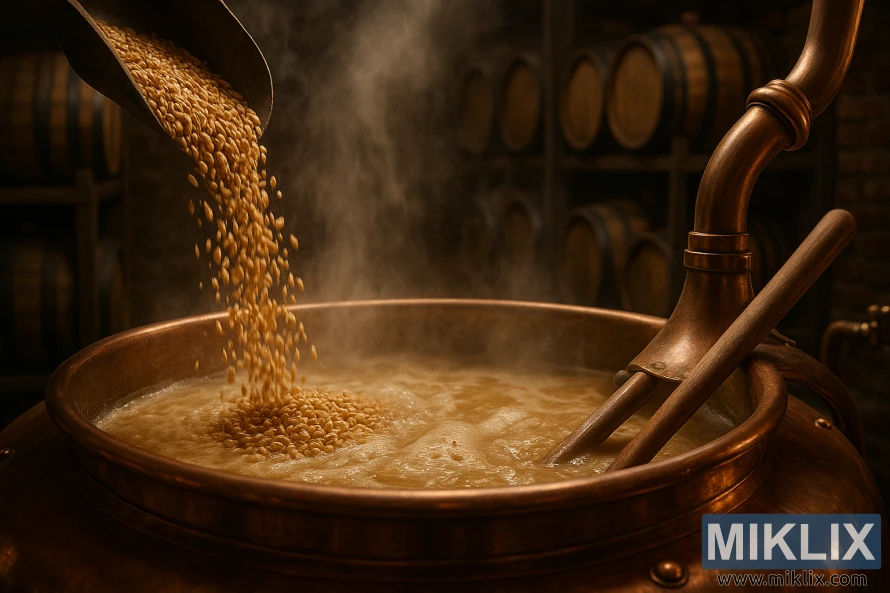
Quality Control and Storage Considerations
Proper storage and handling of wheat malt are essential for maintaining its flavor and quality. Wheat malt is sensitive to moisture, light, and heat. These factors can cause it to degrade or become contaminated.
To maintain the quality of wheat malt, it is critical to store it in a cool, dry place. It should be away from direct sunlight. The storage area should also be well-ventilated to prevent moisture buildup.
- Store wheat malt in airtight containers to prevent moisture absorption.
- Keep the storage area clean and free of pests.
- Monitor the temperature and humidity levels in the storage area.
- Use wheat malt within a reasonable timeframe to ensure freshness.
Regular quality control checks are also vital. They ensure that the wheat malt meets the required standards. This includes checking for signs of spoilage, moisture content, and flavor profile.
By following these guidelines, brewers can ensure that their wheat malt is stored and handled properly. This results in consistent and high-quality brewing results.
Modern Innovations in Wheat Malt Brewing
Wheat malt is leading the charge in new trends in craft brewing. Breweries are innovating, making wheat malt a key player in experimental brewing and craft beer production.
Modern breweries are using wheat malt to craft unique flavors and textures. Trends include:
- Using wheat malt in sour beers to enhance complexity
- Incorporating wheat malt into IPA recipes for a smoother finish
- Experimenting with wheat malt in dark beers to add depth
These innovations are not limited to specific styles. Breweries are combining wheat malt with other ingredients to create new beer experiences.
The versatility and quality of wheat malt drive its use in modern brewing. As the craft beer industry evolves, wheat malt will likely remain a key ingredient in many recipes.
Some breweries are focusing on sustainability, using locally sourced wheat malt. This supports local agriculture and ensures malt freshness.
Modern innovations in wheat malt brewing offer several benefits:
- Enhanced flavor profiles
- Increased creativity in recipe formulation
- Better quality control through high-quality wheat malt
Conclusion
Brewing with wheat malt can elevate your beer to new heights, providing a rich, complex flavor profile. This is hard to achieve with other ingredients. Wheat malt is versatile, used as a base malt or with other malts for various beer styles.
To master wheat malt, understanding its characteristics, preparation, and usage is key. By following the guidelines outlined, brewers can unlock wheat malt's full flavor. They can experiment with different techniques and recipes, creating unique and delicious beers.
With the knowledge from this article, brewers can confidently add wheat malt to their brewing repertoire. This allows them to explore new flavors and creativity. Whether you're experienced or just starting, wheat malt is a valuable ingredient. It offers a world of possibilities for crafting exceptional beers.
Further Reading
If you enjoyed this post, you may also like these suggestions:
- Brewing Beer with Golden Promise Malt
- Brewing Beer with Pale Malt
- Brewing Beer with Midnight Wheat Malt
